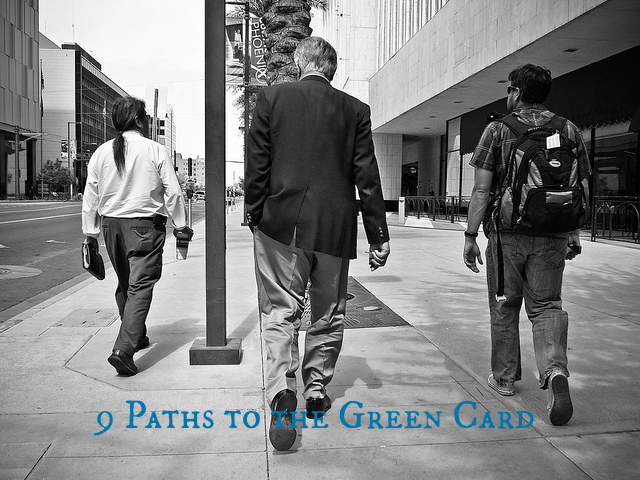One of the biggest critiques of the U.S. immigration system is that there are very few options available to foreign nationals that create a direct path to permanent residency. Indeed, this is a very cruel reality for our clients. A reality that we struggle to overcome on a day to day basis. More often than not we speak to clients who simply cannot immigrate to the United States because of our antiquated immigration laws.
The immigration system boils down to two harsh realities. Generally, you may apply for permanent residence only if: 1) you have a qualifying family relationship to a legal permanent resident (LPR) or U.S. Citizen (family sponsorship) 2) you have secured employment with a U.S. company willing to sponsor your permanent residence (employment sponsorship) or 3) you belong to a special category of green card applicants and may immigrate on the basis of that category (VAWA recipients, asylees, diversity visa lottery winners etc.)
In order for you to understand the green card options available to you under the current immigration laws of the United States, we outline 9 of the most common ways to obtain permanent residence below:
Green card based on a qualifying Family-sponsorship
You are generally eligible to apply for permanent residence if you have a qualifying family relationship with a U.S. Citizen or Legal Permanent Resident:
- If you are the immediate relative of a U.S. Citizen your relative can file Form I-130 Petition for Alien Relative on your behalf, which will allow you to file the I-485 application for Permanent Residence. Immediate relatives of U.S. Citizens include spouses, unmarried children under the age of 21 of a U.S. Citizen, and parents of U.S. Citizens 21 years of age or older.
Immediate relatives of U.S. Citizens DO NOT have to wait in line for a visa number to become available to them in order to immigrate to the United States.
- If you are the family member of a U.S. Citizen and you fall under a qualifying “preference category,” your U.S. Citizen relative may file the I-130 Petition on your behalf. Family members of U.S. Citizens that fall into a “preference category” include: unmarried sons or daughters over the age of 21, married children of any age, and brothers and sisters of U.S. Citizen petitioners 21 years of age or older.
Immigrant visa numbers for these individuals are limited and are therefore subject to a waiting period. You must wait for your priority date to become current on the Visa Bulletin, based on your preference category and country of charge ability, before you are eligible to either apply for adjustment of status in the United states, or apply for an immigrant visa at a U.S. Consular post abroad (if you reside overseas).
 Visa Lawyer Blog
Visa Lawyer Blog





